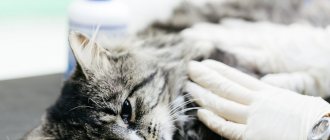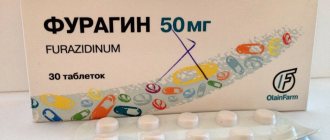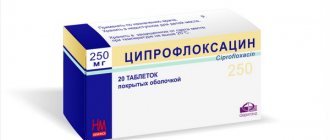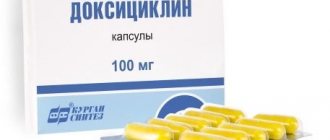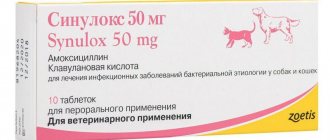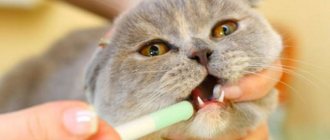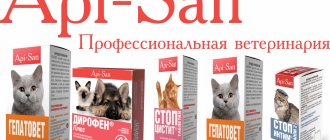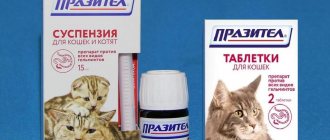general characteristics
Furacilin - in Latin Furacilinum
Synonyms: nitrofurazone, nitrofuran, furatsin.
- Fine crystalline powder of yellow or greenish-yellow color, slightly bitter taste. Slightly soluble in water (1:4200) and alcohol, but soluble in alkalis.
- Available in powder, tablets of 0.1 g for oral administration and 0.02 g for the preparation of external solutions, as well as in the form of 0.2% ointment.
- Furacilin has an antimicrobial effect against pathogens of anaerobic infection, many gram-positive and gram-negative microorganisms.
- Furacilin in a solution of 1:5000
is used externally for the treatment and prevention of purulent-inflammatory processes on the skin and mucous membranes. In surgical practice, a solution consisting of furatsilin - 0.2 g, novocaine - 2.5 g and distilled water up to 1 liter has proven itself to be effective for irrigating wounds, burn surfaces and soaking drains. In order to prevent postoperative suppuration and treat opened abscesses and phlegmons, tampons soaked in a furatsilin solution are introduced. For conjunctivitis, corneal injuries, stomatitis, a solution of 1:5000 is successfully used, and for blepharitis - 0.2% ointment. - To prepare an aqueous solution, 1 tablet (0.02 g of furatsilin) is dissolved in 100 ml of hot distilled water or isotonic sodium chloride solution.
- The drug is contraindicated in case of increased individual sensitivity to furatsilin.
- Trade names: Furacilin, Aldomitsin, Amifur, Hemfuran, Coxistat, Furacin, Furan-2, Furatsinetten, Furaplast, Furazol W, Furezol, Furracoccid, Mammex, Nefko, Nifuzon, Nitrofural, Vabrotsid
Nitrofurazone (INN, trade name Furacin, furatsilin)
is an antimicrobial organic compound belonging to the class of nitrofurans. Furacilin is most often used as a local antibiotic ointment. It is effective against gram-positive bacteria, gram-negative bacteria and can be used in the treatment of trypanosomiasis. Its use in veterinary and human medicine has become less frequent as safer and more effective products have become available. Nitrofurazone has demonstrated clear evidence of mutagenicity and carcinogenicity in animal studies, and has been discontinued for medical use in the United States. The substance is pale yellow and crystalline. It was once widely used as an antibiotic for the treatment of cattle and small ruminants.
Pharmacy-prepared ~400 ml aqueous solution of furatsilin (Russian: Furacilin, nitrofural), 1:5000 (0.2 mg/ml or 0.02%), ready for topical use.
What solution to use for rinsing
It all depends on the condition of the animal’s eyes and the indications for the procedure.
If the eyes are simply watery, there are no crusts or purulent plaque around the eyelids, most likely the cause of lacrimation is an allergy, a foreign object, or physiological features of the structure of the tear duct. In this case, it is enough to rinse your eyes with simple solutions - clean boiled water, saline solution, black tea, or a decoction of medicinal herbs. By the way, chamomile will help soothe the mucous membranes and relieve swelling and redness. You can wash your eyes with a weak solution of potassium permanganate - it perfectly relieves inflammation and disinfects the surface of the cornea. Any solution (especially herbal decoctions and tea) must be carefully filtered through several layers of gauze to prevent small particles from getting on the cornea. If purulent crusts, black or brown discharge have accumulated around the animal's eyelids, it is most likely conjunctivitis of various natures - infectious, fungal or bacterial. To treat the eyes, you need to use antiseptic pharmaceutical agents - furatsilin, boric acid, sodium chloride, chlorhexidine. All these remedies work well against various pathogens. The veterinary pharmacy has special “Diamond Eyes” drops - they are intended for the treatment of ophthalmic diseases of cats. These drops contain antiseptic and anti-inflammatory components; the medicine can be instilled directly onto the cornea or washed with it on the eyelids. Remember that any selected solutions should be in low concentration, because this is, after all, the delicate mucous membrane of the eye, which can get burned by powerful compounds. Any liquid for washing should be at a comfortable temperature - not hot or cold. As soon as you choose the medicinal composition, you need to proceed directly to the procedure itself.
how to brush a cat's teeth
Human use
Nitrofurazone was previously available in the United States by prescription and was indicated as a topical solution, topical cream, or topical ointment for the treatment of bacterial skin infections, wounds, burns, and ulcers. It has also been used as a prophylactic measure to prevent infection that could potentially lead to skin graft failure. Furacilin (nitrofurazone) is still very popular as a topical solution for the treatment of tonsillitis in Russia.
Folk remedies
A kitten's eyes are festering: how to treat it at home
The use of traditional medicine recipes is justified if it is necessary to immediately provide assistance to a kitten when it is not possible to show the animal to a veterinarian.
Important! If treatment with folk remedies does not bring relief to your pet, his condition continues to worsen, you should immediately contact a veterinarian.
Black tea
You can clean an eye that has begun to open poorly due to drying discharge of a non-infectious nature using a tampon generously soaked in strong tea leaves. The medicine is prepared from tea leaves and should not contain flavorings or sugar.
Herb tea
Decoctions based on chamomile, calendula or St. John's wort have a mild antiseptic and regenerating effect. These remedies allow you to soothe irritation when a foreign body gets into the animal’s eye, a bacterial infection occurs, the development of an allergic reaction, and prevents the penetration of bacteria into open wounds due to injuries.
To prepare the solution, just pour 1 tbsp. dry herbs 200 ml of boiling water, soak for 5-12 hours and strain.
Important! The use of black tea or herbal infusion is allowed up to 5 times a day. The infusion should be at room temperature so as not to cause additional inconvenience to the patient.
Pharmacokinetics
The mechanism of action is not fully understood, but presumably the antimicrobial properties of nitrofurazone are associated with the interference of DNA synthesis in the microorganism by inhibiting certain enzymes that are involved in glycolysis. Other enzymes that may be affected include pyruvate dehydrogenase, citrate synthetase, malate dehydrogenase, glutathione reductase, and pyruvate decarboxylase.
Metabolism of topically applied nitrofurazone is thought to occur by reduction of 5-nitro and cleavage of the -CH=N- bond to form reactive species that can covalently bind to cellular macromolecules; neither end product is considered antimicrobial.
When is eye rinsing required?
Veterinarians advise not to poke cats in the eyes unless necessary and without obvious signs of illness. There is no need to rinse your cat's eyes with furatsilin when they are simply wet. This is a natural process of secretion of colorless liquid from the mucous membrane. This happens so that the cornea of the eye is not irritated by lint or dust.
© shutterstock
The daily formation of a dark crust in the corner of the eye, which the cat cleans every day during the morning toilet, should not bother a caring owner. But, there are certain breeds of cats, such as Persian, Scottish Fold and British Shorthair. Due to their anatomical feature, constant lacrimation, they need daily eye rinsing.
There are several reasons why you should wash your cat's eyes with Furacilin:
- If an eye injury occurs, debris enters causing inflammation;
- During periods of allergies to dust, pollen, detergents and other irritants. You need to make a solution of Furacilin and treat the cat’s eyes to completely wash off the allergen particles.
- To prepare the eye sockets before starting treatment for any infectious disease.
Contraindications
People with chronic kidney disease and large total body area (TBSA) burns should not use nitrofurazone because topical preparations usually contain polyethylene glycol, which is easily absorbed through the skin. Rapid absorption of the drug causes an increase in serum osmolality and anion rupture, leading to death. Symptoms are similar to ethylene glycol poisoning in that an increase in serum calcium occurs simultaneously with a decrease in ionized calcium.
Furacilin (nitrofurans) have been found in honey, meat and seafood.
People with glucose-6-phosphate dehydrogenase deficiency (G-6-PD deficiency) who eat fish, poultry, or other foods that have been treated with nitrofurans are likely to suffer from red blood cell hemolysis as a result of eating contaminated food.
Features of the procedure for adult cats
Usually cats are reluctant to allow any medical manipulations to be performed on them. This makes eye rinsing difficult to do alone. It is better to do this with an assistant who will hold the animal.
- Prepare equipment: cotton pads, tissue napkins, gauze or bandage, syringes without a needle for 5 or 10 cubes.
- Wrap the animal in a towel or soft cloth to secure it.
- Moisten a cloth with warm medicinal solution and squeeze onto the affected eye.
- Wait for the crusts to soften, and then remove them with a cotton pad using movements from the outer corners of the eyes to the inner ones.
- When eyelashes stick together with pus, move the napkin from your nose to your ears to open your eyes. In this case, cotton pads need to be changed as they become dirty.
- Gently pour the solution onto the cornea of the cleaned eye using a syringe.
- Remove excess solution by dabbing the eye with a dry cloth or cotton swab wrapped in a bandage. During the procedure, try not to touch the eyeball with gauze or a swab.
We suggest you familiarize yourself with: Thai cat colors
Attention! Before washing your cat's eyes, you should not wipe them with dry cotton wool, as this will lead to even greater irritation of the eye organs.
Toxicity
Furacilin (nitrofurazone) is suspected of being a human carcinogen
and is listed as a toxic chemical in California as defined by Proposition 65. Studies show that nitrofurazone causes mammary tumors (fibroadenoma and adenocarcinoma) in rats and ovarian tumors in mice. In addition, animal studies have shown an increase in the incidence of seizures, ovarian atrophy, testicular degeneration, and articular cartilage degeneration. Appropriate personal protective equipment should be used when working with nitrofurazone.
How to put Furacilin in your nose
It often happens that when a cat is hypothermic, a colorless liquid is released from the nose, this is rhinitis. The first step is to consult a veterinarian. If he prescribes rinsing the nose with Furacilin solution, do it like this:
- Furacilin should be warm for rinsing.
- To rinse the nose, you can use a syringe (without a needle), but for the safety of the cat it is better to use a pipette.
- If the cat is restless, you should use outside help and hold the animal.
- Half a cube (0.5 ml) of solution for one nostril will be enough. Do the procedure three times a day, for 3-5 days.
If furatsilin is in tablets, it is diluted in a ratio of 100 g. water, one fourth of the tablet. To make the tablet dissolve faster, crush it to a powder and pour boiling water over it.
Cat owners periodically face the need to wash their pets' eyes. This procedure is quite simple, you can handle it yourself. Both herbal infusions and preparations from a regular pharmacy are suitable for rinsing.
Learn about essential antimicrobials in animals
- Trichopolum instructions for veterinary medicine
- Instructions for the use of the antibiotic Baytril in animals
- Instructions for use of metronide
- Instructions for ceftriaxone preparations for animals
- Use of Metrogyl in veterinary medicine
- Instructions for doxycycline in animals
- Metronidazole (Metronidazole) for animals (instructions for use in veterinary medicine, doses, indications and contraindications)
- Atovaquone (ATOVAQUONE)
- Azithromycin, instructions for animal therapy
^Top
When and why is rinsing necessary?
Animals are not always able to remove accumulated discharge from the outer and inner corners of the eyes. Therefore, the owner needs to periodically help the pet with hygiene. In other cases, rinsing becomes one of the methods of therapy when it is necessary to cure an eye disease.
Causes and symptoms of eye diseases
There is no need to panic if your pet’s eyes begin to water - perhaps a speck of dust has landed on the cornea, and the body has activated a protective reaction in the form of profuse lacrimation. Such conditions quickly, within one day, cease without human help. But there are also more serious cases - eye damage or diseases:
Scratches and wounds
. A pet can get eye injuries during a fight, play, or fall. Symptoms include redness, swelling, and in rare cases, bleeding.
Foreign body entry
. Accompanied by severe lacrimation, redness of the eyelid and cornea; if the speck remains in the eye for a long time, pus may appear.
How to restore clarity of vision, or how to wash pus out of a cat’s eyes?
A cat's festering eyes can be a symptom of a variety of feline ailments - from eye or eyelid injury to the most serious diseases, including feline distemper and even rabies.
Even the owner-veterinarian will not be able to make a diagnosis “by eye”, without carrying out a set of tests (among which we will obligatoryly rinse off the conjunctiva). And treating “nobody knows what” means exposing the animal to the risk of complications or even worse.
But it is clear that not everyone has a good veterinary clinic within walking distance. A visit there may be postponed, but the cat’s eyes need to be washed out of pus somehow. How to wash a cat's eyes to remove pus at home?
Rinse your cat's purulent eyes: the main thing is not to harm
Before visiting the clinic, veterinarians categorically do not recommend rinsing your pet’s eyes with potassium permanganate and medicinal solutions (especially antibiotics).
After this, it will be much more difficult for the doctor to make a correct diagnosis - the clinical picture will be blurred. Therefore, the best remedy in this case is ordinary boiled water.
If the diagnosis has already been made at a veterinary hospital, then treatment will be prescribed there. They will tell you how to wash a cat’s purulent eyes if there is a bruise or injury to the eyelid (for this you need a 3% solution of hydrogen peroxide).
They will explain how and with what to wash a cat’s eyes from pus with purulent conjunctivitis: a 2% aqueous solution of boric acid will help. By the way, you can prepare it yourself: take 2 teaspoons (without top) of boric acid in half a glass of water.
In case of blepharitis - before washing the mustachioed eyes - the purulent crusts are softened with Vaseline oil. The list of things to use to wash a cat's eyes if they fester: saline solution, a weak solution of potassium permanganate (potassium permanganate) or furatsilin, chlorhexidine, as well as herbal decoctions with antibacterial properties (chamomile, calendula, St. John's wort, sage). And, of course, tea leaves.
Symptoms of stomatitis in a cat
There are several alarming manifestations that will indicate that the cat’s oral cavity is sick and needs urgent examination:
- frequent washing, with an emphasis on the mouth, where something is bothering the pet;
- pathological secretion of saliva, even during moments of rest;
- foul-smelling, disheveled fur that catches infected saliva;
- decreased appetite;
- unpleasant odor from the mouth;
- unquenchable thirst (the cat drinks constantly).
This is interesting: Diagnosis of CHF 4fk in a Dog
There are a number of additional symptoms that indicate the presence of stomatitis:
- apathy and excessive drowsiness;
- sudden increase in temperature;
- swelling of the lips;
- pinkish saliva (mixed with blood);
- enlarged lymph nodes under the lower jaw;
- loosening/loss of teeth;
- tumors, ulcers and ulcers.
As a rule, animal owners notice signs of stomatitis (with inflammation and ulcers) when the disease has reached a progressive stage.
Rinse your cat's eyes at home
9578Pavel 2
For both adult cats and kittens, watery eyes are a pressing problem. And for their owners, the main question in such a situation is how to wash the kitten’s eyes and how to properly approach this procedure. Considering how sensitive cat's eyes are, the owners of such pets require maximum care and attention so as not to worsen the pet's condition.
Situations in which eye rinsing is necessary and types of discharge
Your pet may need to wash the eye if an inflammatory process has begun. For inflammation to develop, there must be some condition that provokes it, for example:
- eye injury;
- ingress of a foreign object, such as specks, pollen, small insects;
- development of conjunctivitis;
- infection of viral etiology, such as chlamydia or mycoplasmosis;
- allergic reaction;
- helminthic infestation;
- turn of the century.
The nature of discharge from your pet's eyes may indicate the cause of inflammation, for example:
- if the eyes begin to fester, the discharge is thick and yellowish, and the cat’s eyelids stick together - this is a fungal, bacterial or infectious disease;
- if the cat rubs its eyes with its paws, and the discharge is clear and watery, this is an allergy or injury;
- if the discharge looks like a transparent drop and when it dries in the corners of the eyes, it turns brown - this is dust or dirt getting into the pet’s eyes.
Which cats are at risk?
Stomatitis can be primary (self-developing) or secondary, occurring as a parallel symptom of another disease.
Causes of primary stomatitis:
- mechanical injuries (scratches, punctures, wounds) due to a defective bite or a sharp object caught in the mouth;
- chemical/thermal exposure, including excessively hot or icy food, burns from household chemicals and poisonous plants.
Causes of secondary stomatitis:
- allergic reaction to food;
- bacterial, viral and fungal infections (panleukopenia, candidiasis, leukemia and others);
- endocrine diseases, such as diabetes;
- diseases of the liver, kidneys and gastrointestinal tract (hepatitis, gastroenteritis and others);
- dental pathologies (autoimmune reactions, caries or tartar deposits).
Important! Cats at risk for stomatitis include cats with a weakened immune system (sick, lactating and elderly), with an incorrectly formed bite, and those who have microtraumas/burns in the oral cavity.
The oral cavity is the Achilles heel of British Shorthair cats, in which stomatitis is diagnosed more often than in other breeds. Young animals that exhibit “juvenile” stomatitis are also susceptible to it during the period of teeth change.
Types of disease
Based on their distribution in the oral cavity, stomatitis is divided into focal (with narrow localization) and diffuse, affecting the entire mucous membrane of the mouth with the palate, gums, lips and inner surface of the cheeks. In addition, any inflammation of the oral cavity takes an acute or chronic form. Acute stomatitis is characterized by a vivid clinical picture and rapid development . Chronic ones provoke general malaise and have a sluggish clinical course.
Catarrhal stomatitis
The most common type, which marks the onset of complicated stomatitis when the disease is neglected or its treatment is erroneous. Often noted against the background of tartar/sore teeth. Signs of catarrhal inflammation are excessive drooling with stringy saliva, redness, swelling and soreness of the gums, an unpleasant odor from the mouth, plaque on the inside of the cheeks and gums.
Papillomatous stomatitis
Typical viral stomatitis, resulting from the action of the papilloma virus, which leads to the formation of characteristic growths on the mucous membranes of the cheeks and lips. The shape of papillomas resembles cauliflower and disappears without outside intervention with strong immunity after 7–12 weeks.
Important! If the immune system cannot cope with the virus, the papillomas are removed surgically, using antiviral and immunostimulating drugs.
Ulcerative stomatitis
It is characterized by the formation of weeping ulcers (along the entire mouth or in individual places), the size of which is determined both by the duration of the disease and the causes of its occurrence. In some cases, the cat's temperature rises. With ineffective therapy, ulcers on the mucous membrane become overgrown with pathological connective tissue, turning into ulcerative stomatitis with granulations, which threatens necrosis - death of the mucous membranes with complete loss of function.
Gangrenous stomatitis
As a rule, it is a complicated continuation of ulcerative or phlegmonous stomatitis, in which the mucous membrane begins to die, as evidenced by the foul odor from the cat’s mouth. This type of stomatitis, in most cases accompanied by enlarged submandibular lymph nodes and fever, threatens the animal with sepsis and death. The only salvation is emergency surgical intervention.
Phlegmonous stomatitis
The mucous membrane, under which pus accumulates (protrudes outward during punctures), changes its bright pink color to bluish/gray. With this type of stomatitis, there is also a high risk of blood poisoning (sepsis), which is why immediate cleaning of the oral cavity, carried out under general anesthesia, is indicated.
Autoimmune stomatitis
A specific form of stomatitis, in which the inflammatory process begins against the background of the cat’s body rejecting its own teeth . Severe symptoms of inflammation, often complicated by concomitant infection, are observed at the bases of all teeth. Standard therapy for autoimmune stomatitis is completely ineffective, so tooth extraction is recommended.
Uremic stomatitis
It occurs as a severe complication of renal failure (usually chronic), due to the accumulation of toxins in the blood of a sick animal, causing inflammation/irritation of the mucous membrane. Uremic stomatitis, determined solely by a blood test, often becomes a harbinger of the imminent death of a cat.
Diphtheritic stomatitis
It is rare in cats and is characterized by the formation of a whitish coating. After removing the plaque, which is quite difficult to do, foci of severe inflammation or bleeding ulcers are found in the animal’s mouth.
